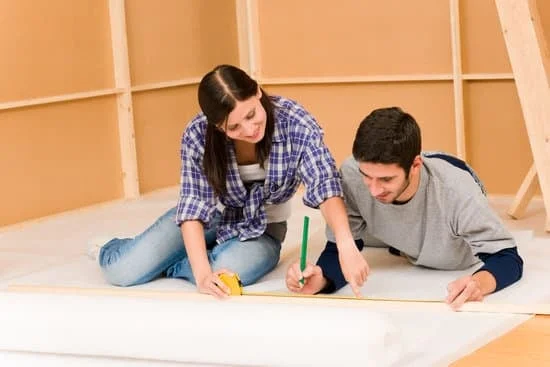Are you wondering how to get home improvements when you are on disability? Making home modifications and improvements can be a challenging task for individuals with disabilities. Creating a safe and accessible living environment is crucial for enhancing the quality of life and independence of those living with disabilities. In this article, we will explore the different avenues available to individuals on disability for obtaining the necessary resources and assistance to make home improvements.
Living with a disability presents unique challenges, especially when it comes to navigating and utilizing various spaces within the home. Simple tasks such as moving around, accessing facilities, and performing daily activities can be hindered by architectural barriers. This is why it is essential to address these challenges by making necessary home modifications that can improve accessibility and safety.
Understanding the rights of individuals with disabilities in terms of housing and home modifications is the first step towards creating an accessible living environment. Alongside government assistance programs, nonprofit organizations, do-it-yourself home modification tips, hiring contractors experienced in making home modifications for people with disabilities, financing options, and accessibility products are some of the avenues we will explore in this article.
Understanding Your Rights
People with disabilities face unique challenges when it comes to accessing and modifying their living spaces to meet their specific needs. Understanding the rights and protections afforded to individuals with disabilities is crucial in ensuring that they have equal access to safe and accessible housing. The Americans with Disabilities Act (ADA) is one of the most important pieces of legislation that protects the rights of people with disabilities, including those related to housing and home modifications.
The ADA requires that newly constructed or altered housing, including rental properties and condominiums, be accessible to individuals with disabilities. This means that property owners and landlords have a legal obligation to ensure that their properties are designed and equipped to accommodate individuals with disabilities. Furthermore, the Fair Housing Act prohibits discrimination in housing based on disability, ensuring that individuals with disabilities have equal opportunities in the housing market.
In addition to federal laws, many states and local governments have their own laws and regulations that provide additional protections for people with disabilities. It’s important for individuals on disability to familiarize themselves with these laws and understand how they apply to their specific housing situation. By understanding their rights under the law, individuals can advocate for necessary home modifications and accommodations without facing discrimination or unfair treatment.
| Disability Rights Protection | Description |
|---|---|
| Americans with Disabilities Act (ADA) | Requires accessibility in new construction and alterations |
| Fair Housing Act | Prohibits discrimination based on disability in housing |
Government Assistance Programs
For individuals on disability, making home improvements to create a safe and accessible living environment can be a significant challenge. Thankfully, there are several government assistance programs available to help alleviate the financial burden of home modifications. These programs aim to support individuals with disabilities in improving the functionality and accessibility of their homes, ultimately enhancing their quality of life.
One of the primary ways individuals on disability can access assistance for home improvements is through grants offered by government agencies. These grants are specifically designed to provide financial aid for necessary modifications such as wheelchair ramps, bathroom renovations, and other accessibility enhancements. Additionally, there are various federal and state-sponsored programs that offer funding or low-interest loans for individuals in need of home modifications due to disability.
For example, the U.S. Department of Agriculture (USDA) provides grants and loans through its Rural Housing Repair and Rehabilitation program to eligible individuals with disabilities who reside in rural areas. Similarly, the Department of Housing and Urban Development (HUD) offers grants specifically targeting homeowners with disabilities through its HOME Investment Partnerships Program. These grants can be used for a wide range of home improvements aimed at creating a safer and more accessible living environment.
Another vital resource for individuals on disability seeking assistance with home improvements is the Social Security Administration (SSA). The SSA’s Supplemental Security Income (SSI) program provides financial assistance to disabled adults and children with limited income and resources. Through SSI, eligible individuals may qualify for additional funding or benefits that can be utilized towards necessary home modifications.
In addition to these government assistance programs, it’s important for those on disability to explore local resources and agencies that may also offer support for home improvements. Nonprofit organizations often work in partnership with government entities to provide additional financial aid or material assistance for individuals in need of accessibility modifications. By tapping into these resources, individuals on disability can take proactive steps towards creating a safe and comfortable living space that meets their unique needs.
| Government Assistance Program | Eligibility Requirements |
|---|---|
| U.S. Department of Agriculture (USDA) Rural Housing Repair and Rehabilitation program | Residing in rural areas; determined level of income |
| Department of Housing and Urban Development (HUD) HOME Investment Partnerships Program | Homeownership; specific disability-related needs |
| Social Security Administration (SSA) Supplemental Security Income (SSI) program | Limited income and resources; specific disability status |
Nonprofit Organizations
Financial Assistance
Many nonprofit organizations provide financial assistance to help cover the expenses associated with home modifications. This financial aid can be used to install wheelchair ramps, widen doorways, renovate bathrooms for accessibility, and make other necessary changes to improve safety and mobility within the home. Additionally, some nonprofits may also provide grants for purchasing essential accessibility equipment such as stairlifts, grab bars, and adjustable beds.
Material Assistance
In addition to financial aid, nonprofit organizations often offer material assistance in the form of donated or discounted building materials and accessibility products. This could include items such as construction materials, accessible fixtures, or assistive devices that are essential for creating a more comfortable and functional living space for individuals with disabilities.
How Nonprofits Can Help
Nonprofit organizations specializing in assisting individuals with disabilities can provide guidance and support throughout the process of obtaining home improvements. They can help navigate through available resources, connect individuals with local contractors experienced in making home modifications for people with disabilities, and ensure that the necessary accommodations are made to create a safe and accessible home environment. By tapping into the resources provided by these organizations, individuals on disability can significantly improve their quality of life through necessary home modifications.
DIY Home Modifications
Making home improvements when you are on disability can be challenging, but there are several options available to help create a safe and accessible living environment. In addition to government assistance programs and nonprofit organizations, individuals with disabilities can also consider making do-it-yourself (DIY) home modifications. Here are some tips and advice on simple DIY home improvements that can be easily done:
- Installing grab bars in the bathroom and near the toilet to provide support and stability
- Lowering shelves and cabinets for easy access to items in the kitchen or other areas of the home
- Using non-slip adhesive strips or mats to prevent falls on slippery surfaces such as bathroom floors
- Adding bright, low-glare lighting to improve visibility and reduce eye strain
These DIY modifications not only enhance safety and accessibility but also empower individuals on disability to take control of their living space. By making small changes, they can significantly improve their quality of life without relying solely on outside assistance.
It’s important for individuals on disability to assess their specific needs and limitations before attempting any DIY home modifications. Consulting with a healthcare professional or occupational therapist can provide valuable insight into which improvements would be most beneficial for their individual circumstances. Additionally, conducting research and seeking out tutorials or guides tailored to people with disabilities can offer step-by-step instructions for completing these projects safely.
By taking advantage of DIY home modifications, individuals on disability can actively contribute to creating a more accommodating living environment that meets their unique needs. These small improvements not only enhance safety and accessibility but also foster independence within the comfort of their own homes.
Hiring Contractors
When it comes to making home improvements for individuals with disabilities, it is crucial to find and work with contractors who have experience in creating accessible living environments. Here are some tips on how to go about finding and working with contractors who understand the unique needs of individuals on disability:
1. Research and Referrals: Start by conducting thorough research on local contractors who specialize in making home modifications for people with disabilities. Look for reviews and ask for referrals from other individuals who have undergone similar home improvement projects. A reputable contractor with experience in this area can make a significant difference in the outcome of the project.
2. Check Credentials: Once you have identified potential contractors, make sure to check their credentials and certifications. Look for professionals who are licensed, bonded, and insured. Additionally, inquire about their experience specifically related to home modifications for individuals with disabilities.
3. Communication and Collaboration: When meeting with potential contractors, communication is key. Clearly convey your specific needs and preferences, and ensure that the contractor understands the importance of creating an accessible living environment tailored to your individual requirements. Collaborate closely with the contractor throughout the entire process to ensure that the final result meets your expectations.
4. Get Estimates: Obtain detailed estimates from multiple contractors before making a decision. Compare costs, timelines, and included services to make an informed choice that aligns with your budget and timeline for the home improvement project.
By following these steps when hiring contractors experienced in making home modifications for people with disabilities, you can create a safe and accessible living environment tailored to your specific needs.
Financing Options
Contrary to popular belief, being on disability does not necessarily mean that you have limited options when it comes to financing home improvements. There are various financing options available specifically designed to assist individuals with disabilities in making necessary modifications to their homes. In this section, we will explore some of the different financial resources that can help you fund your home improvement projects.
Low-Interest Loans
One option to consider is applying for low-interest loans that are aimed at individuals with disabilities. These loans often come with favorable terms and conditions and can be used to cover the costs of accessibility modifications such as installing ramps, widening doorways, or adding grab bars in bathrooms. Many financial institutions and government agencies offer these types of loans, so it’s worth researching the options available in your area.
Home Equity Loans
Another potential option is a home equity loan or line of credit. If you own your home and have significant equity built up, you may be able to use this as collateral to secure a loan for your home improvement needs. Home equity loans often come with competitive interest rates and can provide you with the funds needed to make necessary accessibility upgrades without having to rely on other forms of financial assistance.
Other Financial Resources
In addition to low-interest loans and home equity options, there are other financial resources available for individuals on disability who are looking to make home improvements. Some states offer specific grant programs or tax credits for accessibility modifications, while others may provide subsidies for certain types of equipment or renovation work.
It’s important to do thorough research and reach out to local organizations or agencies specializing in disability services in order to fully understand all the potential financial resources that may be available to you.
By exploring these various financing options, individuals on disability can find ways to fund their home improvement projects and create a living environment that is safe, accessible, and tailored to their specific needs.
Accessibility Products and Solutions
In conclusion, individuals on disability face unique challenges when it comes to making home improvements, but there are resources and options available to help create a safe and accessible living environment. Understanding your rights is crucial, as there are laws and regulations in place to protect the rights of people with disabilities when it comes to housing and home modifications.

Government assistance programs can provide financial support for home improvements, while nonprofit organizations also play a significant role in offering assistance.
For those who prefer DIY solutions, there are simple home modifications that can be easily done by individuals on disability. Additionally, hiring contractors who have experience in making home modifications for people with disabilities can ensure that the work is done professionally and effectively. When it comes to financing options, individuals on disability can explore low-interest loans, home equity loans, and other financial resources available for home improvements.
Finally, showcasing a variety of accessibility products and solutions is crucial for improving the safety and accessibility of a home for individuals on disability. Whether it’s grab bars in the bathroom, ramps for wheelchairs, or smart home technology for easier control of lights and appliances, there are many products available to create a more accessible living space. By utilizing these resources and options, individuals on disability can make meaningful improvements to their homes and enhance their quality of life.
Frequently Asked Questions
Can Someone on Disability Buy a House in Canada?
Yes, someone on disability can buy a house in Canada. There are various programs and financial assistance available to help individuals with disabilities purchase a home, such as the Home Buyers’ Plan and the Accessible Housing Program.
Can I Get a Loan if I’m on Disability?
Yes, individuals on disability can still qualify for loans. Some lenders offer specialized loan programs for people with disabilities, taking into account their specific circumstances and income sources. It’s important to research and compare different options to find the best fit.
Can a Person on Disability Inherit a House?
Yes, a person on disability can inherit a house in Canada. However, it’s important to consider how the inheritance might affect their disability benefits or support services. It’s advisable to seek advice from a financial planner or legal professional to understand the implications and make informed decisions about the inheritance.

I’m thrilled to have you here as a part of the Remodeling Top community. This is where my journey as an architect and remodeling enthusiast intersects with your passion for transforming houses into dream homes.





